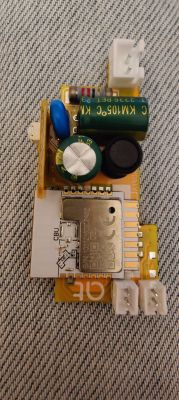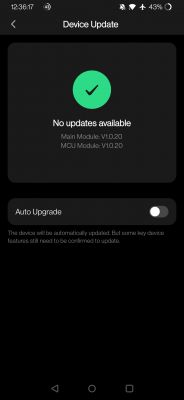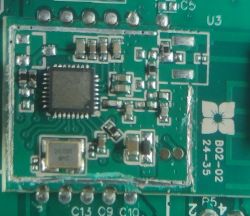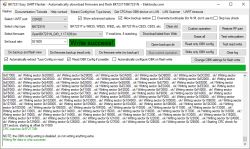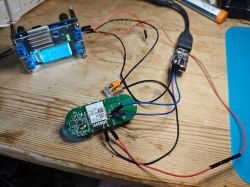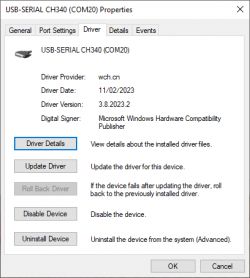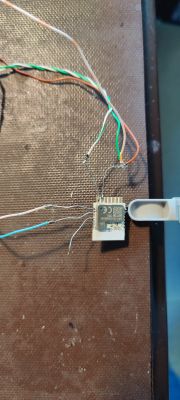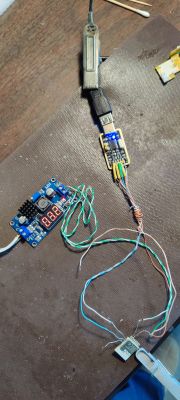FAQ
TL;DR: Struggling to flash a BK7231N breaker? After "hundreds of devices" flashed, an expert says "I haven't seen any with 'locked bootloader'." Fixes: solid 3.3 V, very short leads, isolate RX/TX, and use the alternate reset. [Elektroda, p.kaczmarek2, post #21171045]
Why it matters: This FAQ helps DIY tinkerers quickly diagnose OpenBK flashing failures on Tongou TO-Q-SY1_163JWT using CH340-based UART tools.
Quick Facts
- Device: Tongou TO-Q-SY1_163JWT smart breaker, 63 A model discussed. [Elektroda, Wobbie, post #21168280]
- Platform observed: BK7231N (v1.0.1) via UART logs; flash ID 0xEB6015. [Elektroda, Wobbie, post #21169437]
- USB‑TTL: CH340 with external 3.3 V successfully backed up/flashed a CBU. [Elektroda, divadiow, post #21169538]
- Power and wiring: Keep leads short; if unstable, try 3.6 V on VCC. [Elektroda, miegapele, post #21170906]
- Reset: An alternate reset sequence can be required when CEN alone fails. [Elektroda, p.kaczmarek2, post #21171045]
How do I force the BK7231N CBU into flashing mode when CEN reset doesn’t work?
Use the alternate reset. Start the flasher, wire only RX, TX, GND, 3.3 V. Then force a hard reset. 1. Disconnect 3.3 V from CBU. 2. Briefly short CBU 3.3 V to GND, then remove the short. 3. Reconnect 3.3 V and let the flasher catch boot. This overcomes TX/RX leakage that keeps the CBU alive. Keep cables short and stable. [Elektroda, p.kaczmarek2, post #21171045]
Is Tuya locking the bootloader on BK7231N in this breaker?
No. “I haven’t seen any with ‘locked bootloader’.” Investigate wiring, power, and isolation instead. Use the alternate reset, ensure a clean 3.3 V, and minimize connections during flashing. Hardware issues, not firmware locks, typically block flashing. [Elektroda, p.kaczmarek2, post #21171045]
Which USB‑TTL adapter works best for OpenBK on this CBU?
A CH340-based USB‑TTL works well. One user backed up and flashed the CBU successfully using a CH340 plus an external 3.3 V supply. Keep wires short to reduce noise and voltage drop. This setup is reliable for BK7231N modules. [Elektroda, divadiow, post #21169538]
What voltage and wiring should I use for reliable flashing?
Provide a regulated 3.3 V directly to the CBU and keep all wires short. If the module still resists entry, try 3.6 V briefly. Short leads reduce IR drop and noise, improving bootloader timing. This small voltage bump can help marginal cases. [Elektroda, miegapele, post #21170906]
My flasher ignores CEN resets and power cycles. What should I try next?
Use the alternate reset sequence to fully discharge the module before reapplying power. Start the flasher first, then perform the short 3.3 V to GND pulse. Connect only RX, TX, GND, and VCC to avoid parasitic powering from other lines. This often restores the boot handshake. [Elektroda, p.kaczmarek2, post #21171045]
Could RX/TX be tied to another chip like BL0937/BL0942, blocking flash?
Yes. The UART lines may also connect to a companion SOIC (e.g., metering IC). Check continuity with a multimeter from the CBU pins. If shared, desolder either the CBU or the SOIC to isolate the UART before flashing. This prevents bus contention. [Elektroda, p.kaczmarek2, post #21168693]
I see logs on UART2 but still can’t flash. What does that indicate?
It confirms the module boots (e.g., BK7231N_1.0.1 appeared in logs). Focus on reset timing, wiring, and isolation rather than the logging UART. Avoid posting sensitive log details publicly. Ensure your flashing UART and ground references are correct. [Elektroda, Wobbie, post #21169437]
Can swapping to a different USB‑TTL adapter solve stubborn cases?
Sometimes, but it’s uncommon. Success was shown with a CH340 and external 3.3 V. Issues often stem from poor connections or long cables, not the adapter itself. Shorten leads and re‑solder joints before changing hardware. [Elektroda, divadiow, post #21169538]
What’s an edge case where the device boots but flashing still fails?
Damaged UART pins can break flashing. A CB3S case booted into OBK, yet TX/RX were dead to any adapter. If UART lines fail electrically, replace the module. This hardware failure mimics a software lock but is different. [Elektroda, divadiow, post #21170916]
How do I detect and fix a broken RX/TX trace or pad?
Probe continuity from the header to the CBU pins with a multimeter. Rework the joint with ample flux and thin solder. One user found a broken RX connection after removing the CBU; repairing it restored flashing immediately. [Elektroda, Wobbie, post #21179077]
Should I desolder the CBU from the main board to flash it?
Try in-circuit first. If UART lines are shared or power rails are noisy, remove the CBU for isolation. Alternatively, desolder the companion SOIC to free the UART. Reconnect only essential lines for flashing. [Elektroda, p.kaczmarek2, post #21168693]
What flasher version was reported working with BK7231N here?
The user reported using bk7231flasher_1.3.3. Ensure drivers are installed and the serial port matches. Start the flasher before doing the reset sequence so it catches the boot window. [Elektroda, Wobbie, post #21168280]
What stock firmware version was seen on the Tuya app for this breaker?
Firmware V1.0.20 was reported while the device functioned in the Tuya Smart app. Firmware presence does not imply a locked bootloader; focus on hardware flashing steps. [Elektroda, Wobbie, post #21168280]
Any final checklist before giving up on flashing?
Confirm stable 3.3–3.6 V at the CBU under load, ultra‑short leads, and clean solder joints. Isolate UART from other ICs, then use the alternate reset sequence. As an expert put it, locks weren’t observed across hundreds of devices. [Elektroda, p.kaczmarek2, post #21171045]
